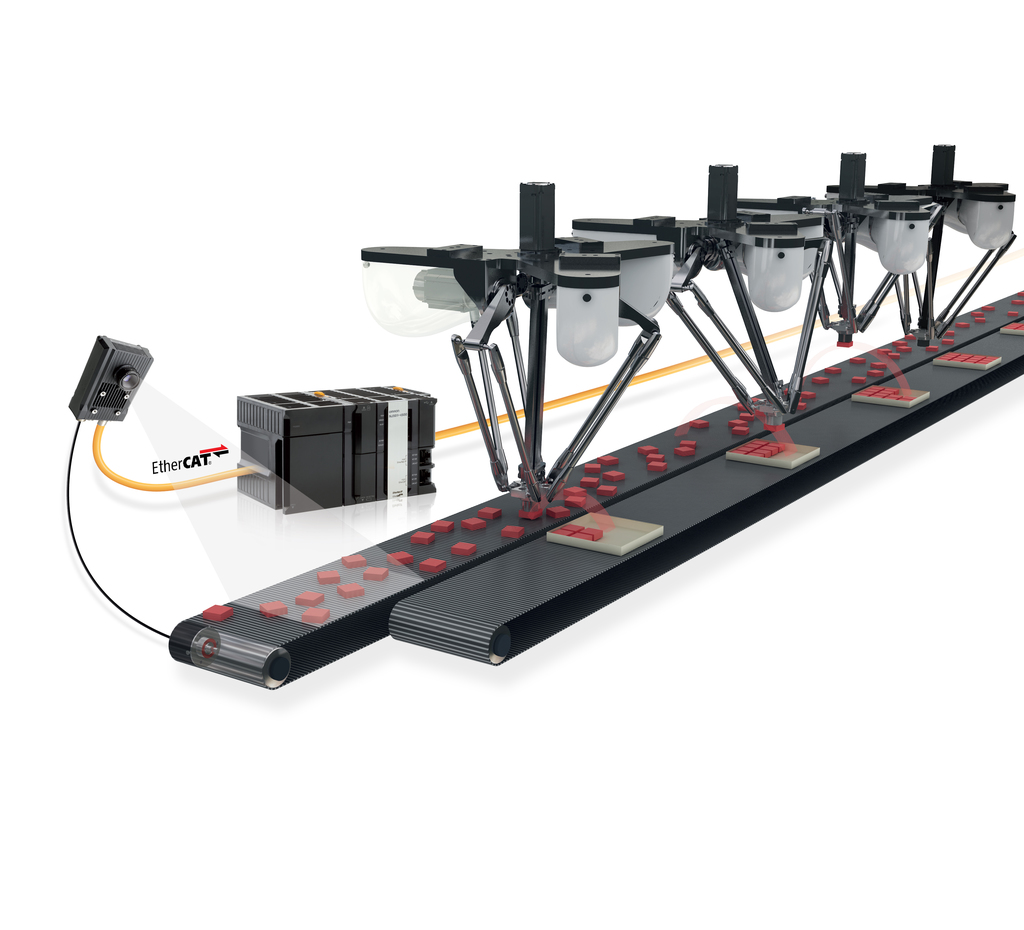
 |
Charlotte Stonestreet
Managing Editor |
| Home> | AUTOMATION | >Robots | >Integrating robotics into our systems – and our thinking |
Editor's Pick
Integrating robotics into our systems – and our thinking
22 October 2014
Omron’s Robert Brooks – product marketing manager motion & drives – argues that robotics should be thought of as one of many ingredients in the ever-richer recipe behind automation.

For managers in those parts of consumer goods manufacturing where robotics have not made significant inroads, the idea of ‘a robot’ is likely to conjure up images of a huge standalone system. Of course, this type of robot has its place in a ‘heavy lifting’ role such as palletising. But increasingly, robot systems are being integrated into other operations and processes, sitting among multiple functions on a single operating platform.
This is especially true of the Delta-style robot which is now an established part of the Omron range, and which offers pick-and-place speeds of up to 150 cycles per minute. These robots have been developed to fit seamlessly into Omron’s Sysmac control platform, alongside servo drives and motion control, PLCs, safety, vision, temperature control – and more – all linked by the same software. Despite their lean looks and compact shape, these Delta robots can handle the vast majority of products with payloads of up to 3kg.
That flexibility can be a huge benefit for end users and machine builders who embrace robots as an integral part of their automation platform, especially when they are used to replace less flexible – or perhaps more complex – electromechanical systems. In many cases, they can form a vital part of the link between two processes or machines.
Thinking differently about robotics can have other benefits. For instance, a few in the food industry have seen this sort of investment as being difficult to justify on the basis of returns, given the unpredictability of many retailer relationships.
Flexible response
The other side of this story is that, for those able to invest, robotic components allow manufacturers not only to respond flexibly to changing retailer demands, but to be proactive about plugging a gap in the market. They are likely to permit a far wider range of options for new product, pack formats or size options.
There are precedents for this sort of shift in thinking. Only a few years ago, the use of servo drives in food, pharma and packaging equipment was thought of – in some quarters – as an over-specified and indulgent luxury. Today, they are an essential component in any high-speed line aiming to combine compact design with precision and repeatability.
Within the Omron automation platform, robots share the same communications system as other servo drives and connect to the same controller. Line managers and operators who are comfortable with servos are likely to feel the same way about integrated Delta robots. Set-up and operation are straightforward. For example, Omron’s Sysmac NJ Delta controller will run up to eight robots, synchronising up to 64 axes of motion. A single controller makes for simpler operation, co-ordinating motion for the entire machine and reducing space requirements.
The synchronisation of multiple machines or lines can be fully programmed thanks to a powerful command set developed especially for pick and place applications that use delta robots. With Omron’s product range, programming is to IEC 61131-3 standards, and is carried out within the Sysmac Studio software package – the same package used to program all other Sysmac components.
In the past, parts of the food industry have at times felt there was a poor fit between robots (often automation in general) and its own requirements, particularly before the packaging stage. A huge amount of work is currently going into both washdown versions of pick-and-place systems and end actuators – grippers and other tooling – as well as integrated vision to take account of the variable size and shape of food components.
So yes, robots are different. There can be few other single components which offer reliability, consistent product quality, greater flexibility, reduced wastage, improved efficiency and safety. Maybe it is time we saw robotic systems as just one more component in the mix of automation solutions – albeit a highly flexible one.
Key Points
- Increasingly, robot systems are being integrated into operations and processes, sitting among multiple functions on a single operating platform
- Flexibility can be a huge benefit for end users and machine builders who use robots as an integral part of their automation platform
- Robotic components enable manufacturers to respond flexibly to changing demands, and be proactive about plugging gaps in the market
- Connect with confidence
- High-efficiency control for almost any AC motor type
- Advanced production line control platform
- Make panel wiring a pushover
- Smart Factory & the Data Revolution
- Medium payload AMRs
- Integrated Packaging Solutions
- WIN an automation training course for 2 from Omron
- Omron's solutions support TheOpenVentilator
- Fast detection & reliable inspection
- Balls to Gravity
- ROBOTS GIVE FASTER CELL TOOL CHANGE TIMES
- ROBOT FOR DELICATE ASSEMBLY
- NUMBER OF ROBOTS IN UK ON THE RISE
- The future is bright - The future is automation!
- High Demand For Grant
- More Capacity, Less Space
- FREEBIRD - THE THIRD DIMENSION
- PRECISION ROBOT CELL FOR THE PHARMACEUTICAL INDUSTRY
- ROBOT SALES REACH ALL TIME HIGH




















